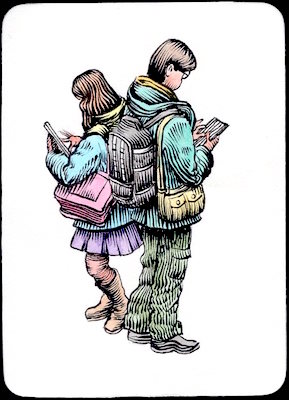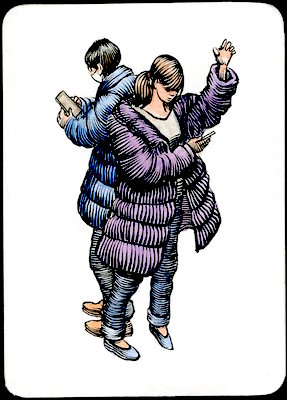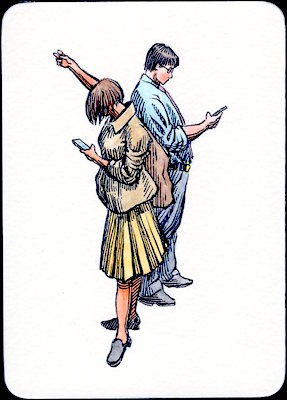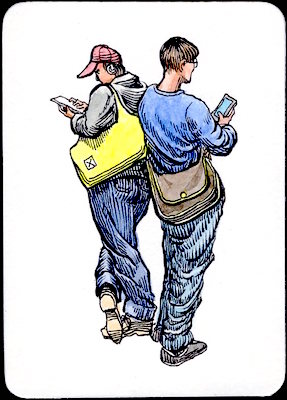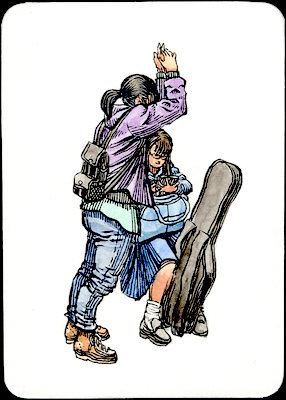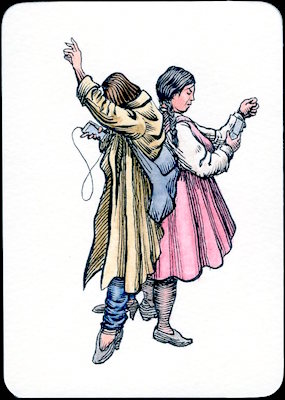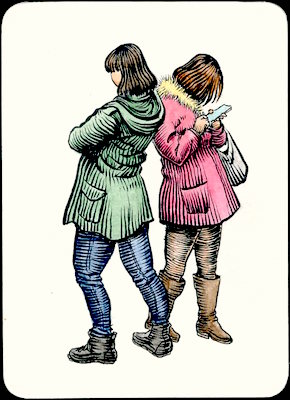|
Part 5: Fall 2017 to Spring 2022
Page 2 Rubber Stamps and Ink drawings on Trading Cards
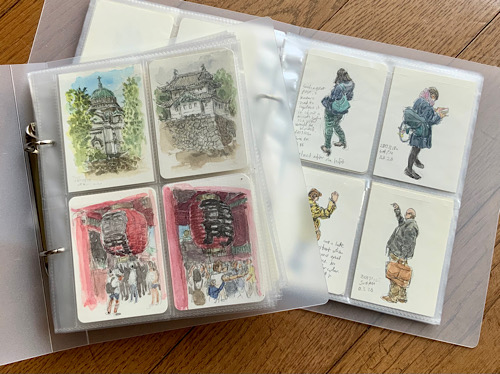
The thing that excites me the most about Artist Trading Cards is the convenience and portability that lets me sketch any time and anywhere, and the fact that it conforms to a universal standard size so I can use ready-made card sleeves and cases and binders. When I show people my sketches, they can pass them around individually because they are not bound in a sketchbook. Several people can look at them at the same time without looking over each other's shoulders. Sometimes someone will want to keep a sketch, and I let them take it. I like the idea of a special rubber stamp for the back of these cards, which seems to be part of the aesthetics and fascination of this format, so I designed one. There are two different categories of art cards in this format:
But this distinction only applies to trading cards that have art, and I think that somebody really screwed up by creating such a distinction, and we all screwed up by accepting it without a fight. If you do a web search you will discover that it is perfectly acceptable to buy and sell trading cards of all types. Art cards are relatively new in the larger world of trading cards, and it appears that the new kid on the block tried to make new rules which nobody but the new kid was willing to acknowledge. Nobody ever accused artists of having too much common sense. The separate designation of ACEO is not only unnecessary, but causes trouble if you don't know whether your card will be eventually swapped or sold, and can't determine which rubber stamp to use. In Japan where I live, they are more sensible and have apparently rejected the ACEO category and only recognize Artist Trading Cards which can be traded, but are more likely to be sold. However, I thought I might like to sell art cards internationally, and to get around this problem, I used neither ATC nor ACEO, but my own concoction of Art Card Original. 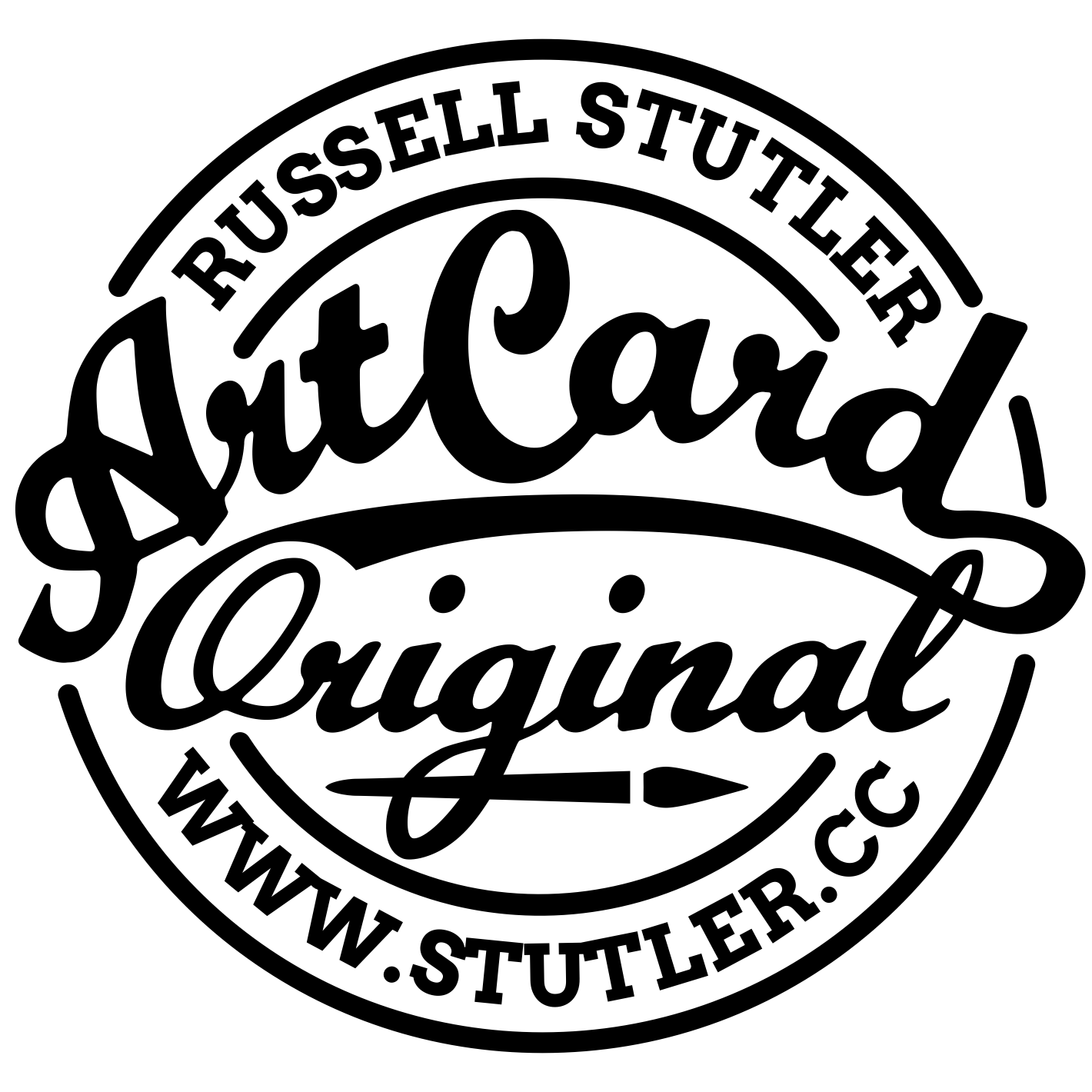 Here are the few art cards which I created for selling internationally.
These were carefully drawn with brush and ink and colored with watercolor at my desk rather than on the spot, and I uploaded them to my website in hopes of selling them, but eventually gave up when there turned out to be no interest, not even a nibble. So I will keep these cards in my trading card binder, and won't be making any more since drawing and painting at my desk is a little tedious and not fun. The main reason I draw and paint these days is for the experience of capturing living and breathing (and unsuspecting) models "in the wild." I've created hundreds of art cards and have filled several binders, but now I am more likely to just give my art cards away for free rather than sell or trade them. This practice began when I was showing some of my cards to a woman here in Japan who asked me (to my surprise) if she could keep one of them. I figured, "why not?" and have been giving them away ever since. As for the two categories of ATC and ACEO, I am personally in favor of scrapping the silly ACEO designation altogether on an international scale and calling them all ATC as we do in Japan, but I'm not about to crusade for this cause; I have rejected the category personally and live in a country that has also rejected it. And I am no longer interested in selling my art cards outside of Japan. As a matter of fact, a few years years after I had the Art Card Original stamp made, I went ahead and designed an Artist Trading Card rubber stamp for use here in Japan. This one has ARTIST TRADING CARD in both English and Japanese and has a QR code that links to my home page which lists the Japanese contents first, and is designed for viewing on a smartphone. My motivation these days for giving away art cards is so that I can share with people via my website the things that are important to me. So the new rubber stamp is very practical and useful to me, but not as pretty as the first rubber stamp. In my opinion QR codes are not aesthetically pleasing as script logos. But I am still using the original pretty stamp on the back of my watercolor postcards plus another rubber stamp I had designed for postcards in English and Japanese. 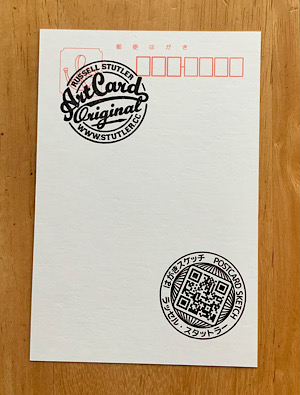
Note about Amazon links: If you click on a link and buy something at Amazon, a few pennies per dollar goes into my Amazon account, so instead of letting Amazon keep it all, you can pry a few pennies from their fingers make them share it with me. Any other vendor links I may put on this website are just for your convenience. |
|
|
|
Next page >>
|

